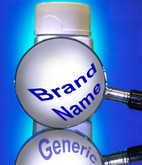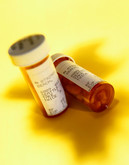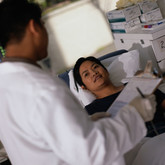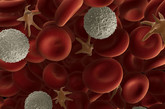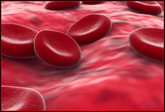Biosimilars/Research
Substitution of biosimilars in the US
The approval of the first biosimilar in the US, Zarxio (filgrastim), on 6 March 2015 [1], prompted Sarpatwari and co-authors to investigate how biosimilars might be substituted for originator biologicals in the US [2].
Substitution of generics in the US
In order to evaluate how strategies to promote the prescribing of generics by physicians in the US might apply to biosimilars, Sarpatwari and co-authors discuss the types of substitution possible with generics [1].
Comparison of the markets for biosimilars and generics
Health is a typical field where the economic theory of market competition does not enjoy the basic conditions to work and the pharmaceutical market is no exception. However, as soon as a patent expires, price competition is opened up.
Patient registry data supports efficacy and safety of Inflectra
US-based injectables specialist Hospira presented data on 19 February 2015 on the use of its biosimilar version of infliximab, Inflectra, at the 10th Congress of the European Crohn’s and Colitis Organisation (ECCO).
Paying physicians to prescribe generics and biosimilars in the US
Healthcare spending on prescription medications comprises 1.6% of gross domestic product (GDP) in the US and continues to rise. Brand-name prescription medications – both small-molecule and biological drugs – are the primary driver of this growth, increasing 15% in price in 2014 alone [1].
Survey among pharmacists shows high confidence for biosimilar substitution when same generic name is used
Approximately 75% of pharmacists indicated that they would be confident or very confident in substituting an interchangeable biosimilar with the reference product if both shared the same active ingredient or non-proprietary name of the reference biological, according to a survey published in JMCP [1].
Equivalent safety and efficacy of nephrology subsequent entry biologics in Canada
A review of efficacy and safety data for subsequent entry biologics (SEBs) used in nephrology practice in Canada has found little clinical difference between epoetin SEBs and the reference product. But while the clinical differences are minimal, argue the authors, the financial implications of a possible dose difference between epoetin zeta and the reference product should be considered in future pharmacoeconomic studies [1].
Comparison of non-originator filgrastim with Neupogen finds no difference in neutropenia recovery periods
Results of an observational study found no difference in Biocad’s non-originator filgrastim (Leucostim) compared to Neupogen in the recovery periods for patients with chemotherapy-induced neutropenia [1].
Generics and off-patent biologicals for cancer treatment in developing countries
The understandable focus on infectious diseases, such as human immunodeficiency virus (HIV), malaria and tuberculosis (TB), has meant that an increasing burden of non-communicable diseases (NCDs), notably cancer, now needs urgent attention across developing countries [1]. Generics and biosimilars offer a lower-cost approach to treatment, but these drugs raise challenges of their own.
Positive phase III data for Amgen adalimumab biosimilar
US biopharmaceutical giant Amgen announced on 3 February 2015 positive results from its phase III clinical trial for a biosimilar version of adalimumab in patients suffering from rheumatoid arthritis.
Biosimilars compared to generics in the European market
Once a patent expires, price competition is possible since any manufacturer can copy the originator product. This circumstance justifies the place in the pharmaceutical market for generics and biosimilars, i.e. off-patent medicines to be sold at lower prices than their originators [1].
Impact of nephrology subsequent entry biologics in Canada
Subsequent entry biologics (SEBs) may soon be a reality in Canadian nephrology practice. Along with opportunities to reduce healthcare costs, these agents pose unique challenges to successful implementation. Understanding the experiences around the globe in both regulatory affairs and implementation will be a valuable guide for Canadian clinicians. This review should assist clinicians and policymakers to navigate this complex subject and to make informed decisions in the best interest of their patients [1].
No relevant difference in ADRs from biosimilars and originators
A study of adverse drug reactions reported in Italy has shown no difference between the number and type of side effects reported for biosimilars and their corresponding originators [1].
Filgrastim biosimilar has similar safety and efficacy to Neupogen
A filgrastim biosimilar (EP2006) from Sandoz, the generics division of Swiss pharma giant Novartis, has shown similar safety and efficacy compared to Amgen’s Neupogen (filgrastim) in a pivotal phase III clinical study.
Improved labelling sought for biosimilar acceptance
The terms of approval for every biosimilar and its reference product must be made clearer, argue the European Biopharmaceutical Enterprises (EBE) [1]. The development of biosimilar regulatory pathways worldwide has been led by the European Medicines Agency (EMA) [2], but EMA’s information-driven stepwise approach is only reflected in a single section of the product labelling for healthcare professionals and patients, which so far has followed a generic approach in Europe.
Regulating the safety of biosimilars
Clinical safety is critically important during the development of a biosimilar. An overview of the main aspects of safety assessment of biosimilars has been prepared to assist all those interested in this area of growing importance [1].
Biocomparable has comparable safety and efficacy to originator erythropoietin in haemodialysis patients
A study of the treatment of patients with chronic kidney disease undergoing haemodialysis with ‘biocomparable’ and originator erythropoietin in Mexico has shown comparable efficacy and safety in terms of changes in haemoglobin levels [1].
Phase I study shows darbepoetin alfa biosimilar to be well tolerated
Chong Kun Dang Pharmaceutical (CKD Pharma) announced on 18 November 2014 the successful completion of its phase I pharmacokinetics study for its biosimilar darbepoetin alfa product.
Extrapolation of indications in biosimilars: epoetin
Despite a stringent approval process, acceptance of biosimilars in the medical community continues to be low, and especially in extrapolated* indications. Members of the European Medicines Agency's (EMA) Biosimilar Medicinal Products Working Party (BMWP) address these concerns using extrapolation of indications in biosimilar epoetin as an example [1].
Non-biological complex drug concept: experiences with iron sucrose and low molecular weight heparin
When the patent of a classical small molecule drug expires, generics may be marketed if their therapeutic equivalence to the originator drug has been established. The therapeutic equivalence of a drug includes both pharmaceutical equivalence and bioequivalence and do not require formal clinical efficacy and safety studies. The demonstration of therapeutic equivalence then allows for the interchangeability of the generic and originator drug. This approach has so far only been applied to products that can be fully characterized. For more complex molecules, which are difficult to characterize, such as proteins, the demonstration of bioequivalence requires an alternative approach.
